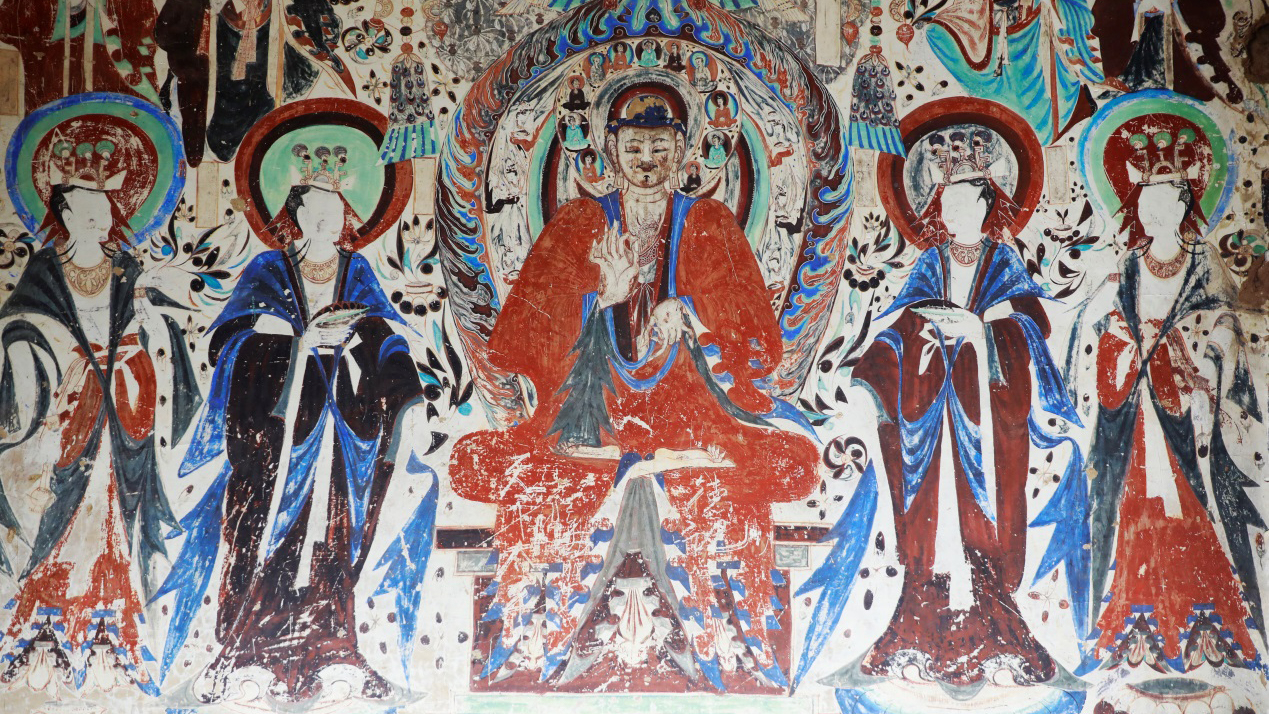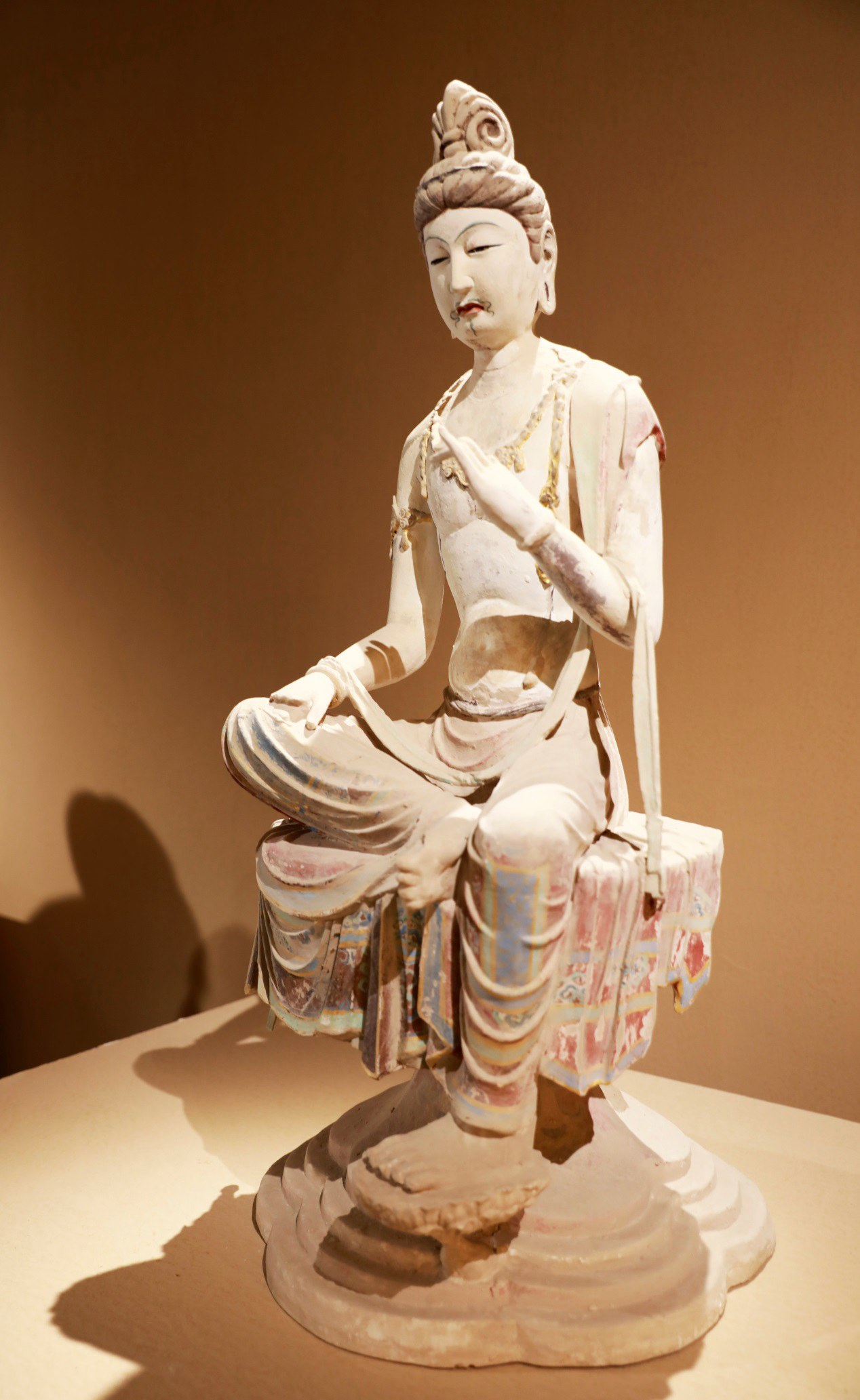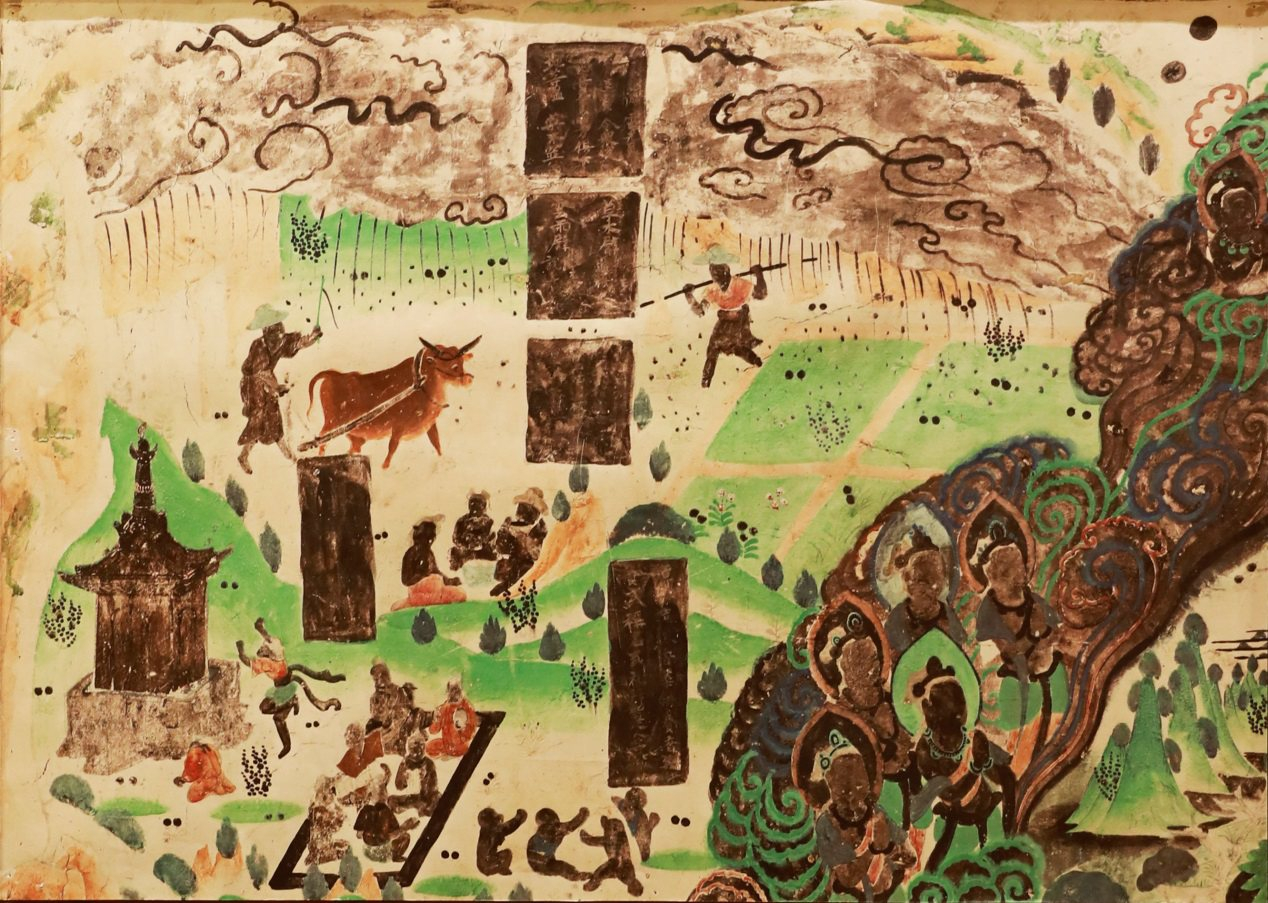02:21

Using advanced technology like VR and digital replication, a new exhibition on the Dunhuang Mogao Grottoes at China Millennium Monument combines the ancient with the modern.
Wu Jian, a researcher at the Dunhuang Academy, said protection of cultural heritage in China has stepped into a new era, and this calls for new forms of technology.

A replicated sculpture from Mogao Grottoes on display. /Credit to Phoenix TV and Dunhuang Academy
A replicated sculpture from Mogao Grottoes on display. /Credit to Phoenix TV and Dunhuang Academy
"Digitization helps us better preserve the relics and to let more people appreciate their enduring beauty. We began the project in the 1980s and we'll continue it in the future. Here at the exhibition we have 1 to 1 replicated caves and sculptures that you can observe in close detail. We also have musical instruments and garments featured in the grottoes, that teach people about the lifestyle of the ancient Chinese people," said Wu.
The Mogao Grottoes are home to collections of Buddhist artwork – more than 2,000 colored sculptures and 45,000 square meters of murals – in 735 caves carved along a cliff. Due to the risk of damage caused by light and weather conditions, only a few are open to the public.
The show also includes some exclusive parts that can't be seen at Dunhuang. No. 285 Mogao cave, for example, is not often open to the public, but can be seen here due to the digital replication.

A replicated Dunhuang mural on display. /Credit to Phoenix TV and Dunhuang Academy
A replicated Dunhuang mural on display. /Credit to Phoenix TV and Dunhuang Academy
Wearing a VR headset, visitors can fully experience the rarely-seen caves. They can also enjoy holographic images of Flying Asparas, from the dance scenes often featured on the murals in Dunhuang.
"Dunhuang art is an all-encompassing art. There's not only traditional Chinese art, but also traces of Indian art and Persian art. The caves were created by artisans from 12 dynasties, in a span of over 1,600 years. It's an incredible achievement even in all human history. And in its digital form, it will last even longer," said Cui Qiang, executive vice president of Phoenix TV who helped co-organize the exhibition.